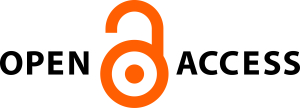Comparative Semantic of Ulèy ‘Head’, Utak ‘Brain’ and Akai ‘Mind’ (Cases of Pidie Dialect in Acehnese)
| Authors | ||
| Issue | Vol 8 No 3 (2025): Talenta Conference Series: Local Wisdom, Social, and Arts (LWSA) | |
| Section | Articles | |
| Section |
Copyright (c) 2025 Talenta Conference Series  This work is licensed under a Creative Commons Attribution-NonCommercial-NoDerivatives 4.0 International License. |
|
| Galley | ||
| DOI: | https://doi.org/10.32734/lwsa.v8i3.2509 | |
| Keywords: | Aceh ethnosyntax NSM Pidie dialect uley utak | |
| Published | 2025-06-02 |
Abstract
This study presents a comparative analysis of the three lexemes ulei ‘head,’ utak ‘brain,’ and akai ‘mind,’ in the Pidie dialect of Acehnese, examined within an ethnosyntactic framework using the natural semantic metalanguage (NSM) approach to clarify semantic distinctions. Data for this analysis comprises spoken material from Pidie dialect speakers as well as written sources from prior studies. The research explores polysemy and allolexy by applying criteria such as BE and MENTAL PREDICATE, to capture nuanced meanings. This study critiques the interpretations provided in various dictionaries, arguing that these descriptions are both ethnocentric and, at times, inaccurate. By grounding semantic descriptions in universal concepts, the research seeks to articulate meaning in a way that transcends cultural biases. The analysis highlights how the three lexemes are conceptually associated with key semantic domains such as THINK, WANT, FEEL, KNOW, PERSON, and SOMEONE. It begins by explicating the physical body- part meanings and subsequently examines the psychological interpretations, shedding light on how these terms reflect specific cultural understandings in Acehnese speech practices.






